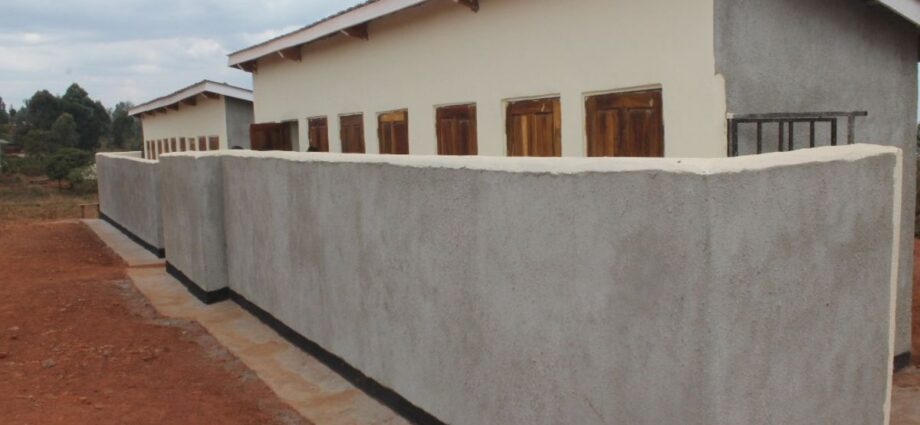According to WHO and UNICEF statistics more than half of the global population lives without access to safe toilets and sanitation. About 800 children die every day of diarrhoea which is linked to drinking unclean water, and poor sanitation and hygiene. The report shows that at least 2 billion people rely for drinking water on sources that are prone to contamination by toilet wastes. Globally, a count of over 673 million people are said to be practicing open defecation.
In the August 30 press release from the Joint Monitoring Program (JMP) 2022 for Water, Hygiene and Sanitation (WASH), a project which is jointly managed by the WHO and UNICEF, Global Estimates for WASH in healthcare facilities establish that nearly half of healthcare facilities worldwide lack basic hygiene services with water and soap. Toilets in these facilities put patients and healthcare providers at risk of infections and diseases. About 688 million people are said to receive care with no hygiene services at all including safe managed toilets in healthcare facilities.
Access to safe managed sanitation is a global crisis and its attainment will by implication boost the fulfilment of the Sustainable Development Goal number 6: ‘Sanitation and Water for All by 2030.’
The theme for World Toilet Day this year is ‘Making the invisible visible.’ The target is to explore how inadequate sanitation systems spread human waste into rivers, lakes and soil, polluting underground water resources. The campaign calls us to uncover the issue because it happens clandestinely and affects mostly the poorest and marginalized communities.
Safeguarding water resources
Within the invisible – the underground – lies the most abundant resource, ground water. According to the UN World Water Development Report 2022 by UNICEF and UN-Water, underground water accounts for 99% of all liquid freshwater on earth. But apart from being the source of fresh water, ground water also supports drinking water supplies, sanitation systems, farming, industry and ecosystems.
However, as climate worsens and population growth becomes a global concern, it is vital for future human survival. It is also crucial for reduction of urban poverty due to unpredictable supply of piped water but also lower cost in connection.
The message from the 2022 theme is to protect groundwater from human waste pollution by safe management of sanitation systems. We are talking about toilets that are properly sited and connected to safely managed sanitation systems, and which collect, treat, and dispose human waste, helping to prevent human waste from spreading into groundwater.
Toilets ought to be built to sustain and adapted to cope with extreme weather events so that services always function and ground water is protected. Without these, hits of heavy rainfalls often lead to surface runoff intercepting poorly contained waste and flushes faecal microbial pathogens and chemicals such as nitrate through shallow soils to the water table. The result of this is diarrhoea and other outbreaks like cholera.
But also, drought-induced changes to sanitation practices which led to a switch from water-borne sanitation (flush toilets) to on-site sanitation facilities (e.g. pit latrines) have amplified the risk of groundwater contamination. This has been commonplace in our urban areas especially Dar es Salaam.
Other challenges like open defecation still requires a lot of work to be done. In Tanzania, the program ‘Nyumba ni Choo’ has been crucial in tackling the issue of unsafe sanitation especially in rural vulnerable communities. The campaign has been a national behavioural change motivation in matters of sanitation and hygiene.
‘Nyumba ni choo’ programme reduced open defecation in bushes and public areas from 5.7% to 1.4% and increased the number of households with modern and safe toilets from 37.1% to 72.1% from 2017 through 2022. This is equal to 72 households with safe and modern toilets in every 100 households according to the Ministry of Health 2022 report.
But according to World Bank reports, more attention should be placed in schools as only 50% of public schools in rural areas have the required number of drop holes and safe toilets, and only 43% have functional hand-washing sanitation facilities.
The government alongside other development stakeholders and partners should steer firm in achieving its Second Five-Year Development Plan (FYDP II) which in part sets a target on access to improved sanitation facilities at 85% in rural areas and Vision 2025 which pledges to increase access to improved sanitation by 95%.
Urban challenges in Tanzania
In urban areas such as Dar es Salaam, safe managed sanitation is a serious health and ground water threat. Many business areas have no proper access to safe managed toilets despite these areas hosting hundreds of people daily.
This means that open defecation is still a common behaviour. Due to costs of connecting piped water and inadequate supply in recent years, citizens have opted for ground water from water wells. However the ground water is at high risk of contamination from human waste pollution, greatly from toilets, owing to poor sanitation and waste control systems of the city.
During heavy rainfall one can witness that people open up their chambers or chambers get busted open by floods and the toilet wastes get in contact with water supply systems. This poses great health endangerment and can trigger outbreaks of communicable diseases like cholera. Water-borne diseases and infections are common and highly associated with poor sanitation and hygiene and lack of safe toilets which can withstand extreme weather events. Looking further ahead, we need more support in building all over the country safe-modern toilets that protects groundwater and the community.
In Tanzania, this day is a clarion call for all parties involved in policy development and quality assurance of social services to fully recognize the connection between sanitation and groundwater in their plans.
The international and local community, development stakeholders and partners urge the governments to work on average four times faster to ensure SDG 6.2 ensure safe toilets for all’ is achieved in good time.
Shimbo Pastory and Johnson Mwamasangula are Tanzanian social development analysts. Email: [email protected], WhatsApp: +447459732915.
Share this news
This Year’s Most Read News Stories

Dissecting the role of the insurance ombudsman in Tanzania
The basic purpose of an insurance plan is to provide financial security to you and your family in case of your misfortunes during the policy tenure.Continue Reading

High Court rejects Transworld’s application
The High Court in Dar es Salaam has struck out an application in which Transworld Aviation, a ground handler at the Abeid Aman Karume International Airport (AAKIA) was seeking permission to sue the Tanzania Civil Aviation Authority (TCAA).Continue Reading

Tanzania Confirms Second Marburg Outbreak After WHO Chief Visit
Dar es Salaam — Tanzania’s President Samia Suluhu Hassan has declared an outbreak of Marburg virus, confirming a single case in the northwestern region of Kagera after a meeting with WHO director-general Tedros Adhanom Ghebreyesus.
The confirmation follows days of speculation about a possible outbreak in the region, after the WHO reported a number of deaths suspected to be linked to the highly infectious disease.
While Tanzania’s Ministry of Health declared last week that all suspected cases had tested negative for Marburg, the WHO called for additional testing at international reference laboratories.
“We never know when an outbreak might occur in a neighbouring nation. So we ensure infection prevention control assessments at every point of care as routine as a morning greeting at our workplaces.”Amelia Clemence, public health researcher
Subsequent laboratory tests conducted at Kagera’s Kabaile Mobile Laboratory and confirmed in Dar es Salaam identified one positive case, while 25 other suspected cases tested negative, the president told a press conference in Dodoma, in the east of the country today (Monday).
“The epicentre has now shifted to Biharamulo district of Kagera,” she told the press conference, distinguishing this outbreak from the previous one centred in Bukoba district.
Tedros said the WHO would release US$3 million from its emergencies contingency fund to support efforts to contain the outbreak.
Health authorities stepped up surveillance and deployed emergency response teams after the WHO raised the alarm about nine suspected cases in the region, including eight deaths.
The suspected cases displayed symptoms consistent with Marburg infection, including headache, high fever, diarrhoea, and haemorrhagic complications, according to the WHO’s alert to member countries on 14 January. The organisation noted a case fatality rate of 89 per cent among the suspected cases.
“We appreciate the swift attention accorded by the WHO,” Hassan said.
She said her administration immediately investigated the WHO’s alert.
“The government took several measures, including the investigation of suspected individuals and the deployment of emergency response teams,” she added.
Cross-border transmission
The emergence of this case in a region that experienced Tanzania’s first-ever Marburg outbreak in March 2023 has raised concerns about cross-border transmission, particularly following Rwanda’s recent outbreak that infected 66 people and killed 15 before being declared over in December 2024.
The situation is particularly critical given Kagera’s position as a transport hub connecting four East African nations.
Amelia Clemence, a public health researcher working in the region, says constant vigilance is required.
“We never know when an outbreak might occur in a neighbouring nation. So we ensure infection prevention control assessments at every point of care as routine as a morning greeting at our workplaces.”
The Kagera region’s ecosystem, home to fruit bats that serve as natural reservoirs for the Marburg virus, adds another layer of complexity to disease surveillance efforts.
The virus, closely related to Ebola, spreads through contact with bodily fluids and can cause severe haemorrhagic fever.
Transparency urged
Elizabeth Sanga, shadow minister of health for Tanzania’s ACT Wazalendo opposition party, says greater transparency would help guide public health measures.

Sign up for free AllAfrica Newsletters
Get the latest in African news delivered straight to your inbox
“This could have helped to guide those who are traveling to the affected region to be more vigilant and prevent the risk of further spread,” she said.
WHO regional director for Africa Matshidiso Moeti says early notification of investigation outcomes is important.
“We stand ready to support the government in its efforts to investigate and ensure that measures are in place for an effective and rapid response,” she said, noting that existing national capacities built from previous health emergencies could be quickly mobilised.
The situation coincides with leadership changes in Tanzania’s Ministry of Health, with both the chief medical officer and permanent secretary being replaced.
This piece was produced by SciDev.Net’s Sub-Saharan Africa English desk.
Source: allafrica.com











